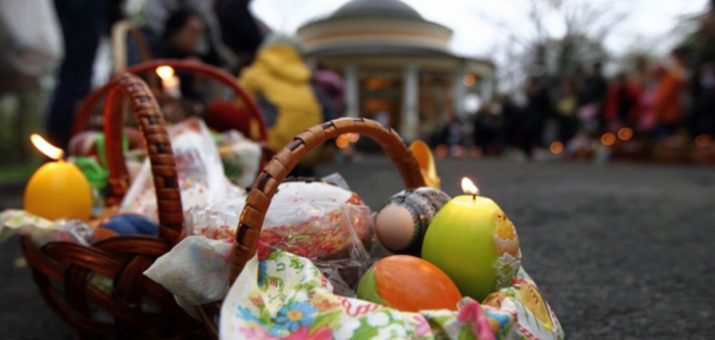When are eggs consecrated on Easter and where to put the shells?

After sprinkling with holy water, the products do not become any special, but if you ask the priest if you can throw the shells from Easter eggs in the trash, you will receive a negative answer. Previously, there was a belief that Jesus Christ and the apostles walk around disguised as poor people throughout Easter week. Throwing away eggshells can accidentally hit one of them and thus cause anger. There are certain terms for the consecration of eggs, as well as requirements for the further disposal of the shell.
Terms of consecration in the church
In order to have time to consecrate eggs at Easter in the church, it is recommended to paint them no later than Thursday during Holy Week. It is not recommended to do this on Friday, since a special service is held in churches, at which believers are encouraged to attend.
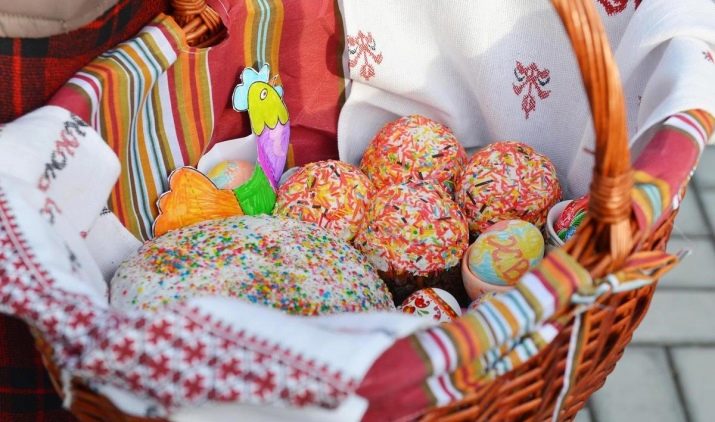
The consecration of eggs, cakes and other festive treats begins on Holy Saturday. Food can be brought to the temple in the morning, put in a specially designated place for this (as a rule, large tables are placed). When the consecration ceremony is completed, the food can be taken away. At the same time, they cannot be eaten right away, since Great Lent is still continuing on Saturday.
Sometimes the ministers of the church independently determine the time and dates for the consecration, and the schedule is posted on the doors of the temple. Some do not go to the Saturday evening service, but only attend the night service, bringing eggs with them for consecration. It is better not to do this. As a rule, there are a lot of people in churches on Orthodox Easter, and in order not to take up too much space with food, it is better to consecrate them on Saturday.
It is customary to go to the festive service already light, only for the purpose of prayer.
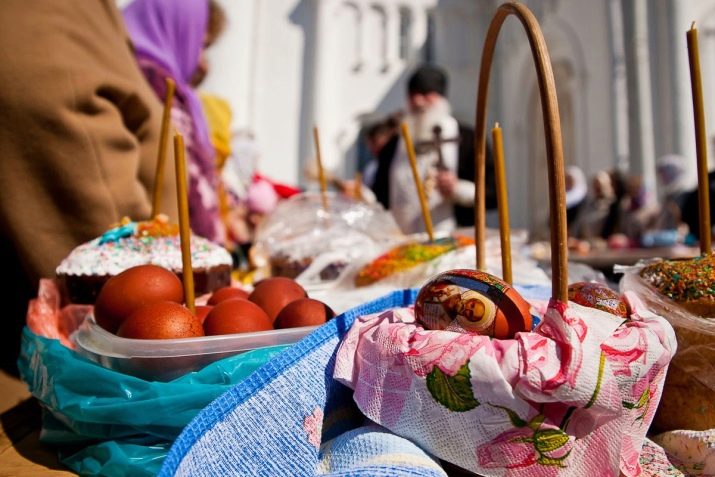
When and how to carry out the ceremony at home?
If for some reason it is impossible to get into the temple, then the eggs are consecrated at home. When carrying out the ceremony, it is recommended to comply with certain conditions and requirements.
For consecration, it is recommended to use water that was brought from the temple on the feast of Epiphany. In order to carry out the ceremony correctly, you need to prepare the following:
-
a food table covered with a white festive tablecloth;
-
a container with holy water (you can use a half-liter jar);
-
a new small brush.
Eggs and other Easter treats are placed on the table. Before carrying out the ceremony, it is imperative to read a prayer, and then proceed to the main process. Eggs are blessed not far from the home iconostasis. You need to dip the brush a little in water and sprinkle it on the food. And also they can be crossed. Products for the festive table are ready.
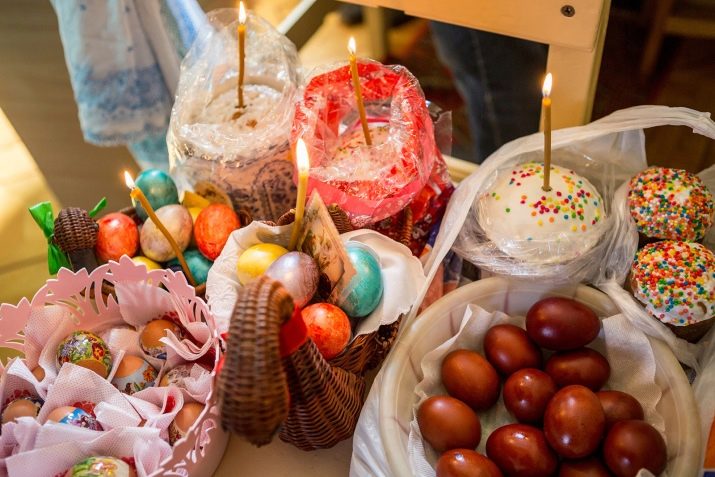
What to do with the shells?
Eggs are eaten at Easter. If they were consecrated in the temple or at home, then the shells from them are not recommended to be thrown into the trash can. At least this is clearly spelled out in church rules. There are several methods for proper disposal.


The simplest and most understandable way for many is to bury the shell in the ground. Of course, you don't have to go and bury the shells of each egg. It is necessary to fold, and when all the eggs are eaten, go and bury.
Backyard owners can bury the shell under a bush. It will be beneficial because it contains a lot of calcium, which enriches the soil. If you don't have your own plot, you can take it and bury it in the forest.
If there are large pots of houseplants at home, then these will also be a suitable option.
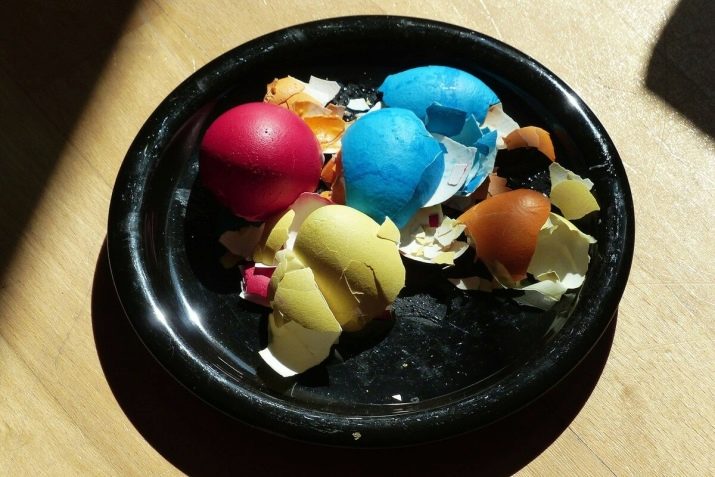
Another option for the beneficial use of Easter egg shells is the manufacture of a medicine. If the eggs have been dyed with onion skins or other natural dyes, the eggshell will become a useful component. The cooking process consists of several steps.
-
The shell with 12-15 eggs must be washed well under running water, and then dried with a regular or paper towel.
-
Grind in a coffee grinder.
-
Pour into a glass container and pour 200 ml of natural lemon juice.
-
Insist for 24 hours, and then store in the refrigerator.
The resulting composition is rich in vitamin C and also contains a large amount of calcium. As a prophylaxis for fractures and colds, it is recommended to take 0.5 tsp. three times a day with meals. In order to avoid negative consequences, you must first consult a doctor.
If you do not want to prepare a prophylactic agent, or if colored food dyes were used to dye the eggs, then the shells can be burned. At the same time, it should not be burned in a sauna stove. Better to use a brazier or some kind of metal container. But the ashes will still need to be buried, since there is nowhere else to put it.
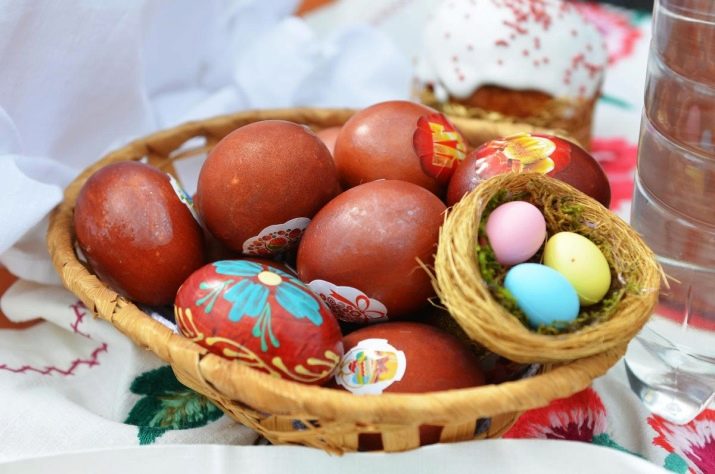
Sometimes, in addition to dyes, decorative elements are used: stickers with Easter symbols and the faces of saints, images of temples, the XB inscription and much more. All this is also not recommended to be thrown into the trash can, since in most cases there are crosses, images of Jesus Christ and other saints. All these attributes are also recommended to be burned or buried in the ground. Of course, paper and plastic cannot be used to prepare the above product.
If none of the methods for recycling the shell is suitable, then the shell, even in this case, should not be sent to the trash can. You can take the shell to the temple or ask someone from the familiar believers to dispose of it. As a rule, no one denies such a request.
When the eggs were painted, but at the same time they did not undergo the rite of sprinkling with holy water, then theoretically they have nothing to do with holy products.
It is permissible to pack such a shell in a plastic bag or any other packaging, and then throw it away. Additionally, it can be wrapped in newspaper or paper.
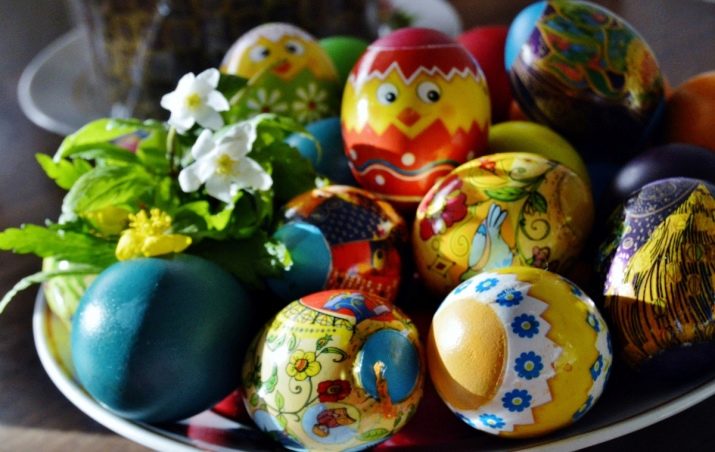
Even so, there is an exception. If, when decorating Easter eggs, stickers with the image of the faces of saints, temples, domes, crosses and other things from the same category were used, then you cannot send them to the trash heap. Best to burn or bury.
If a person throws the shell of Easter eggs into the trash can, then he is committing a sin. The bottom line is that the garbage bag can be torn apart by the dogs living on the container site. As a result, the shell, stickers with the faces of the saints will simply end up on the road. Cars will start to drive over them, unbelievers will step on them, trample them in the mud. Such behavior in relation to Easter products is unacceptable, therefore the most correct decision is to dispose of it in one of the correct and acceptable ways. Only then can sinful deeds be avoided.
